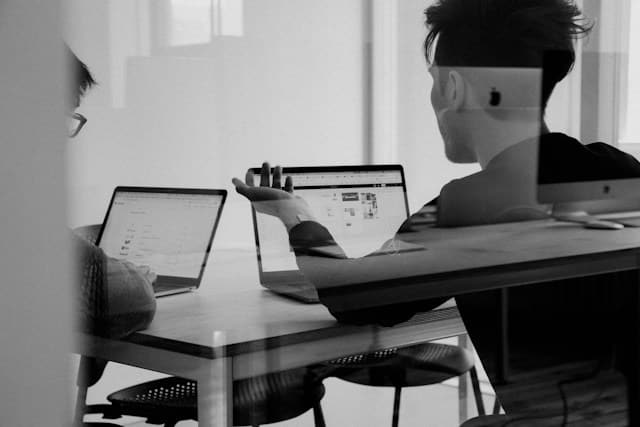As urban areas like Manchester continue to grow and evolve, it’s crucial to embrace sustainable practices that benefit the local environment. Green roofs are one such eco-friendly solution that commercial buildings can adopt. Not only do they offer aesthetic appeal, they also contribute significantly to energy efficiency, water drainage, and biodiversity. This article will guide you, step by step, on implementing a green roof system on your Manchester commercial building.
Understanding the Concept of Green Roofs
Before embarking on your green roofing project, it’s essential to understand what it entails. Simply put, a green roof is a building’s roof partially or completely covered with vegetation and a growing medium, installed over a waterproofing membrane. This roofing system provides numerous benefits including absorbing rainwater, providing insulation, creating a habitat for wildlife, and helping to lower urban air temperatures.
A lire aussi : How Can Reading Law Firms Enhance Their Client Retention Rates Using Client Management Software?
Green roofs come in two main types: intensive and extensive. Intensive green roofs are more elaborate, featuring a wide range of plants, trees, even ponds, and requiring more maintenance. Extensive green roofs, on the other hand, are simpler, often utilizing drought-resistant plants like sedums, and require less maintenance.
Environmental Benefits of Green Roofs
Green roof systems offer a plethora of environmental benefits. They act as excellent insulators, reducing the amount of energy required to heat or cool the building, consequently leading to reduced carbon emissions. They also play a crucial role in water management. By retaining rainwater, they help manage water drainage, thus reducing the chances of urban flooding.
A voir aussi : What Are the Best Practices for Implementing Agile Methodologies in a Liverpool Software Development Company?
Moreover, green roofs contribute to biodiversity, creating a sanctuary for various species, including birds and bees. In urban areas such as Manchester where green spaces are limited, green roofs can serve as vital linkages between different habitats, promoting ecological connectivity.
Planning and Installing a Green Roof System
Planning is a crucial aspect of installing a green roof system. Start by assessing the structural integrity of the building since green roofs are heavier than traditional ones. You may need a structural engineer to confirm if the building can support the extra weight.
Next, consider the type of green roof you want to install. Each type, whether extensive or intensive, has unique installation requirements. The choice will depend on your building’s structure and your environmental goals.
Hiring professionals experienced in green roof installation is advisable. They will be equipped with the necessary knowledge to ensure proper waterproofing, drainage systems, and selection of appropriate plants.
Remember to check if you need planning permission. In Manchester, most green roof installations will fall under permitted development, but it’s always wise to check with the local planning authority.
Green Roof Maintenance
After the installation, proper maintenance is key to ensure the longevity and efficiency of your green roof. The level of maintenance will depend on the type of green roof system installed. More complex systems, like intensive roofs, might require regular watering, fertilizing and pruning.
Irrespective of the type, all green roofs need regular checks to ensure the drainage system isn’t blocked. Also, the waterproofing membrane should be checked for leaks to avoid potential damage to the building.
Conclusion
In conclusion, green roofs are a valuable addition to any urban commercial building. They not only enhance the building’s aesthetic appeal but also contribute tremendously to environmental sustainability. With careful planning, professional installation, and regular maintenance, your green roof will serve as a long-term investment, benefiting both the building inhabitants and the wider Manchester community.
Embracing green roof systems is a step towards a greener, more sustainable Manchester city. Let this guide inspire you to be part of this remarkable green revolution.
The Role of Green Roofs in Combating Climate Change
The increasing concern about climate change has accelerated the move towards green urbanisation, and green roofs have emerged as a vital part of this green infrastructure. Green roofs not only sequester carbon dioxide but also help in reducing the effects of urban heat islands. This is especially significant in Manchester with its dense urban fabric.
Nowadays, cities like Manchester are characterised by vast expanses of concrete and asphalt, which absorb and retain heat. This ‘urban heat island’ effect leads to higher temperatures in urban areas compared to surrounding rural areas. Green roofs, by virtue of their vegetation, reduce this effect by absorbing less heat and reflecting more sunlight than traditional roofs.
In addition, green roofs play a crucial role in improving air quality. The vegetation on green roofs absorbs harmful pollutants and releases oxygen, thereby purifying the air.
Moreover, green roofs can contribute towards mitigating climate change by reducing the energy consumption of buildings. Green roofs insulate buildings, keeping them cooler in summer and warmer in winter, thereby reducing the need for air conditioning or heating. This energy efficiency results in lower carbon emissions, a key contributor to climate change.
Selecting The Right Plants For Your Green Roof Project
The success of your green roof project largely depends on the choice of plants. Sedum roofs, for instance, are popular due to their hardiness and low maintenance requirements. Sedum, a genus of succulent plants, can survive harsh conditions including drought and frost, making them an excellent choice for extensive green roofs.
Another advantage of sedum roofs is their ability to blossom throughout the year, providing a colourful spectacle that changes with the seasons. Different sedum species bloom at different times, ensuring that your roof remains vibrant throughout the year.
The selection of plants should also take into account the local climate, the structure of the building, and the intended purpose of the roof. For instance, if the objective is to enhance biodiversity, a variety of native plant species should be selected to attract different types of wildlife.
Conclusion
A green roof is an innovative solution that addresses numerous environmental issues such as climate change, air quality, and urban biodiversity. Implementing a green roof system in a Manchester commercial building is not just an investment in the building itself but also a commitment to a more sustainable future.
By choosing the right plants and maintaining the green roof properly, it can thrive for many years, providing multiple benefits including energy efficiency, water management, and increased biodiversity. With this guide, you are now equipped to embark on your own green roof project in Manchester and contribute to the city’s green revolution.
Remember: the success of your green roof depends on careful planning, professional installation, and regular maintenance. So, secure privacy, keep safe, and always consult the relevant privacy policy when dealing with professionals. Let’s paint Manchester green, one roof at a time.






